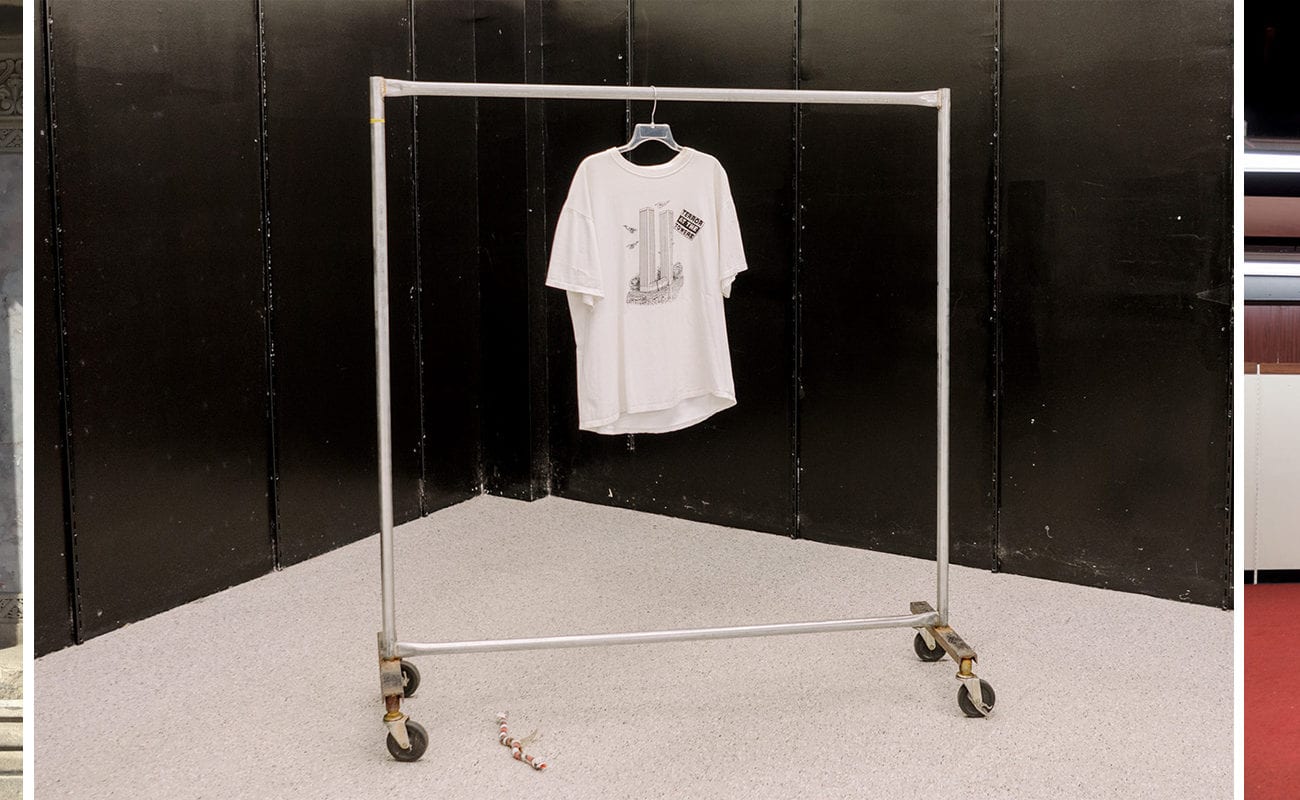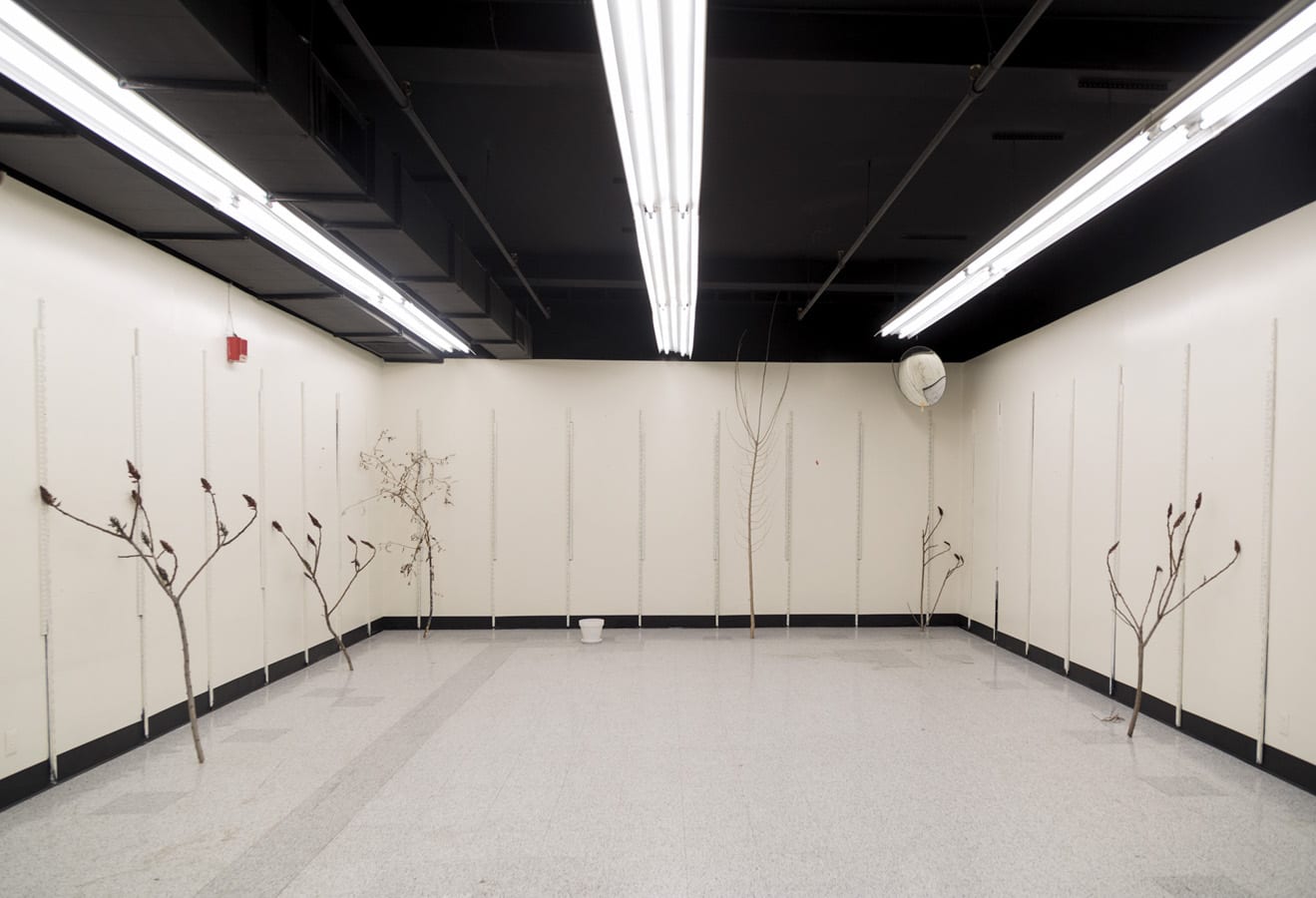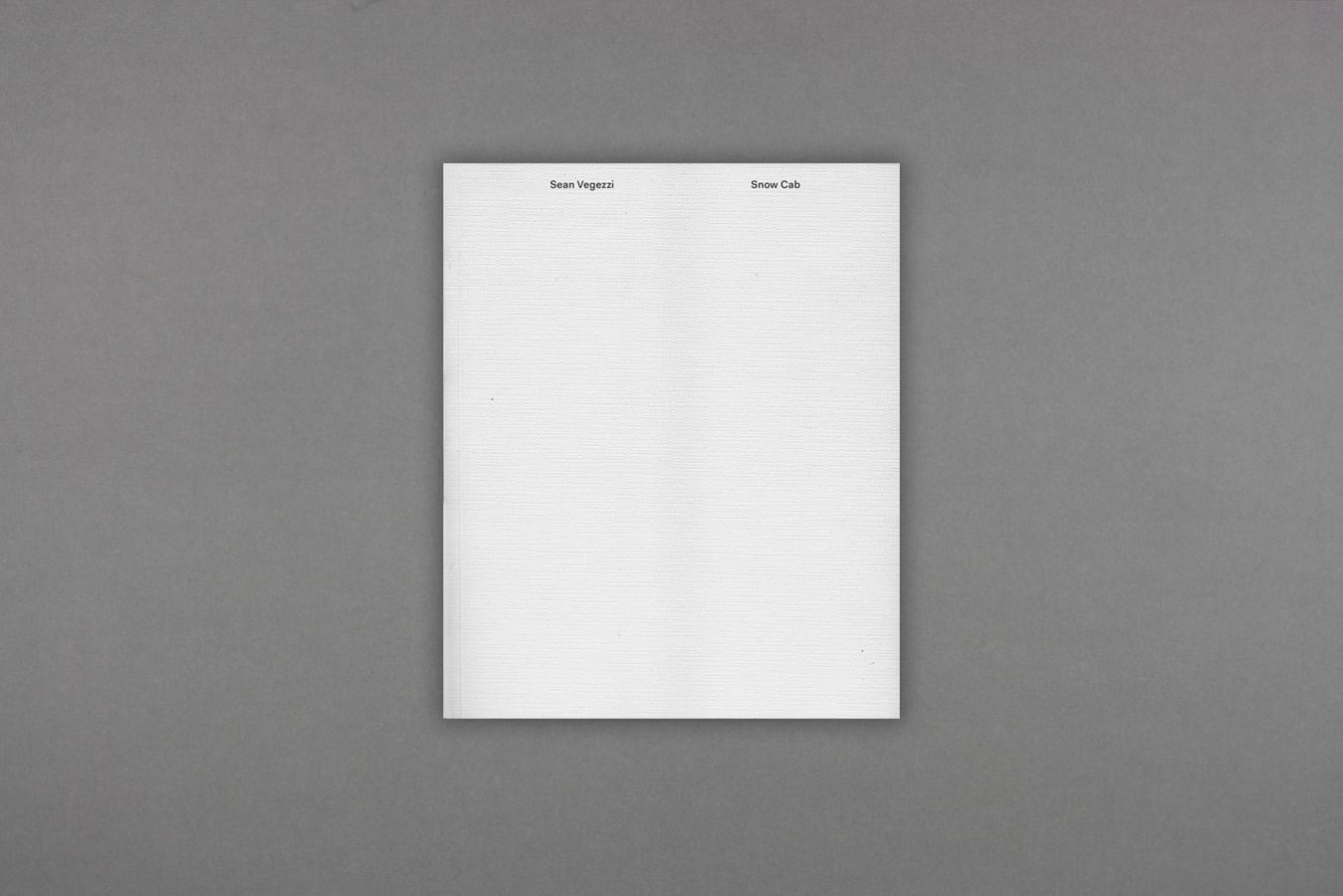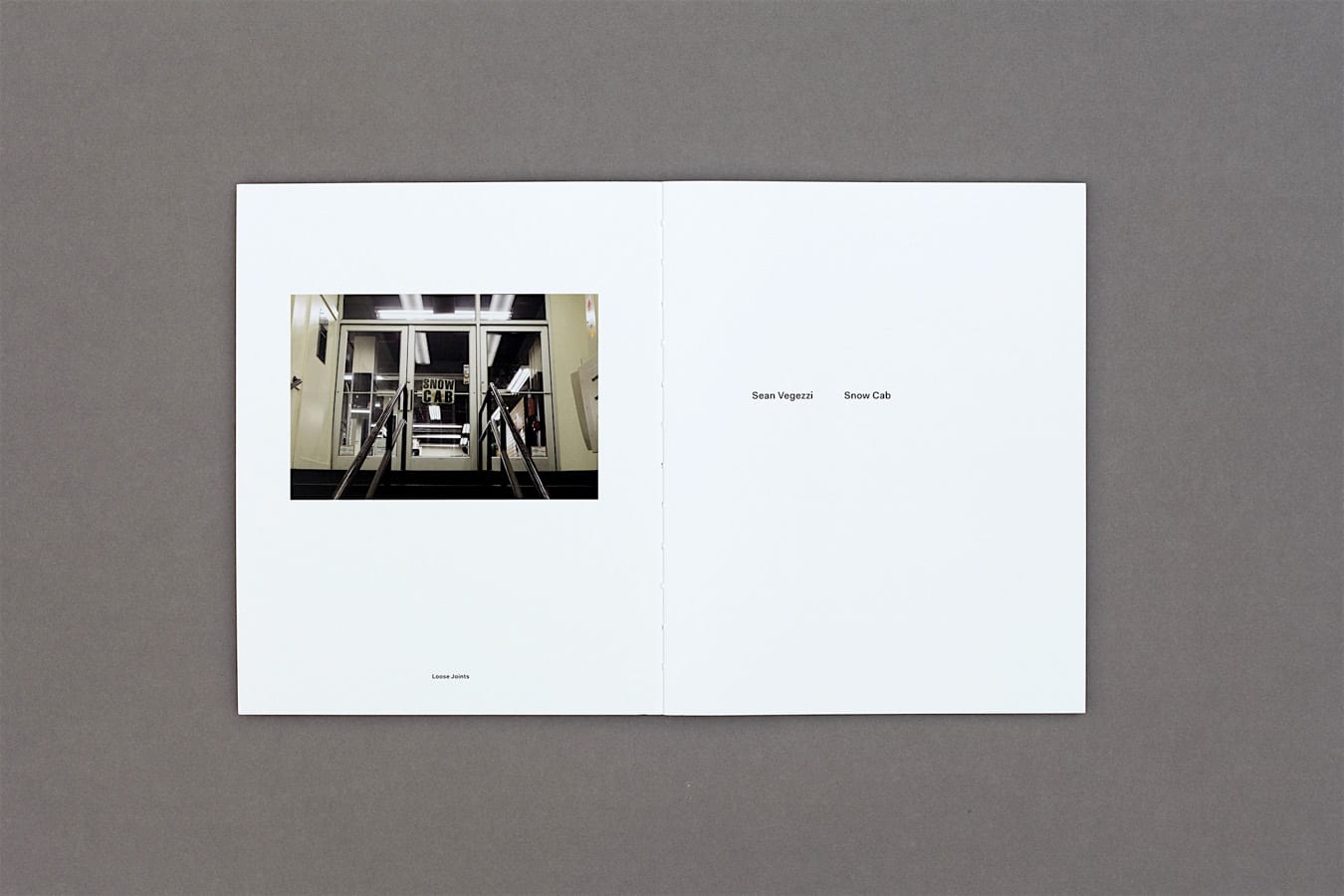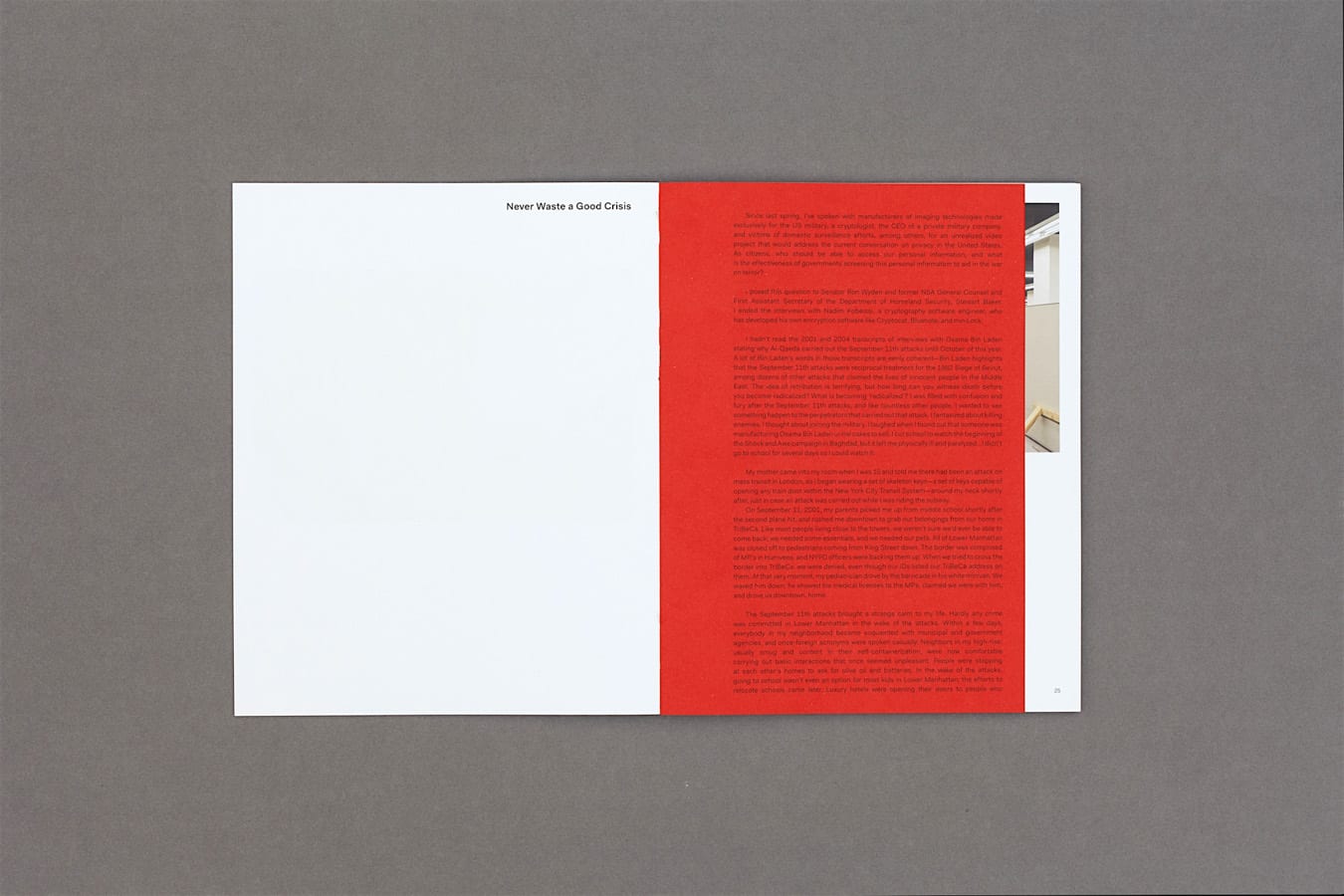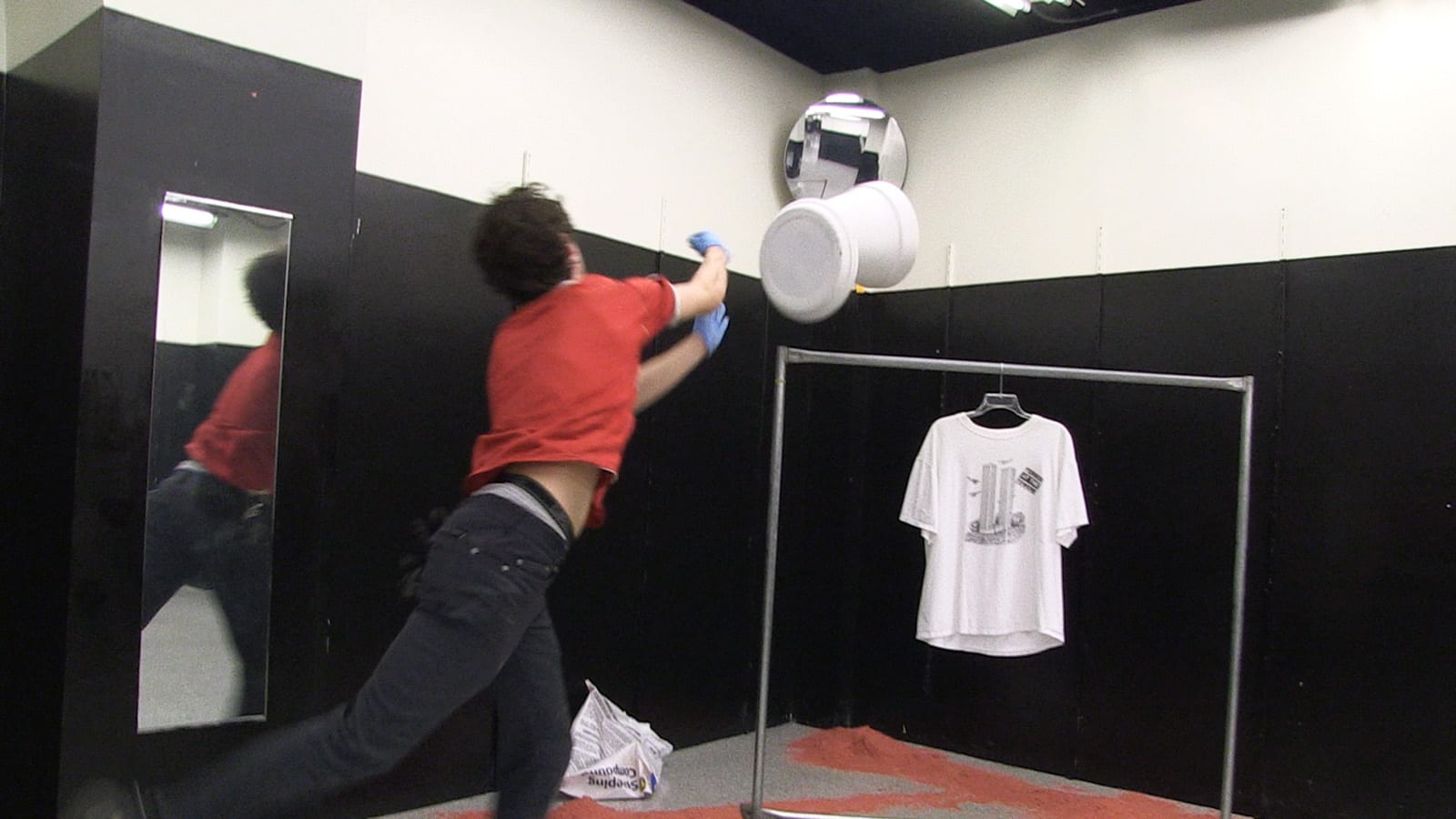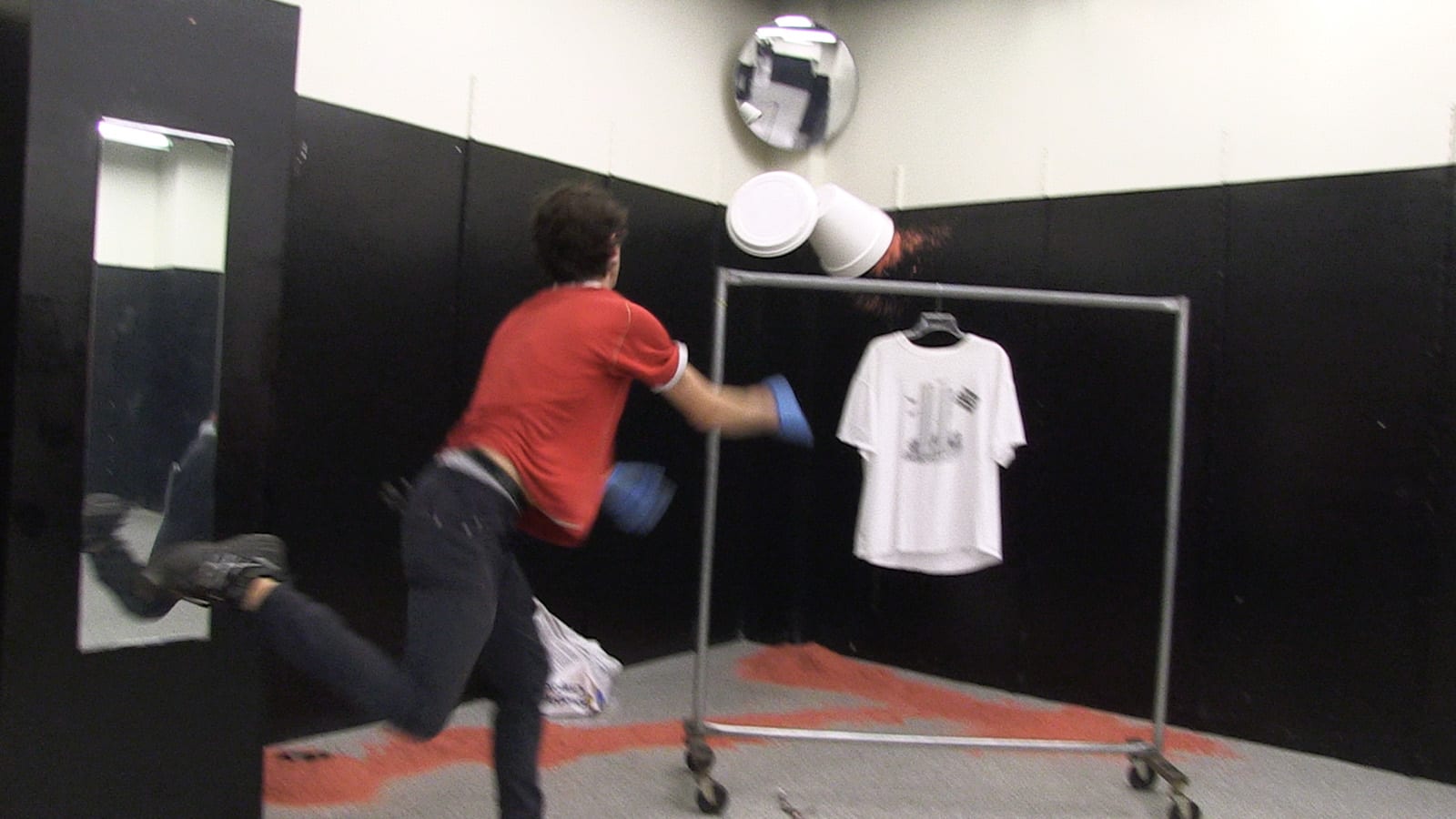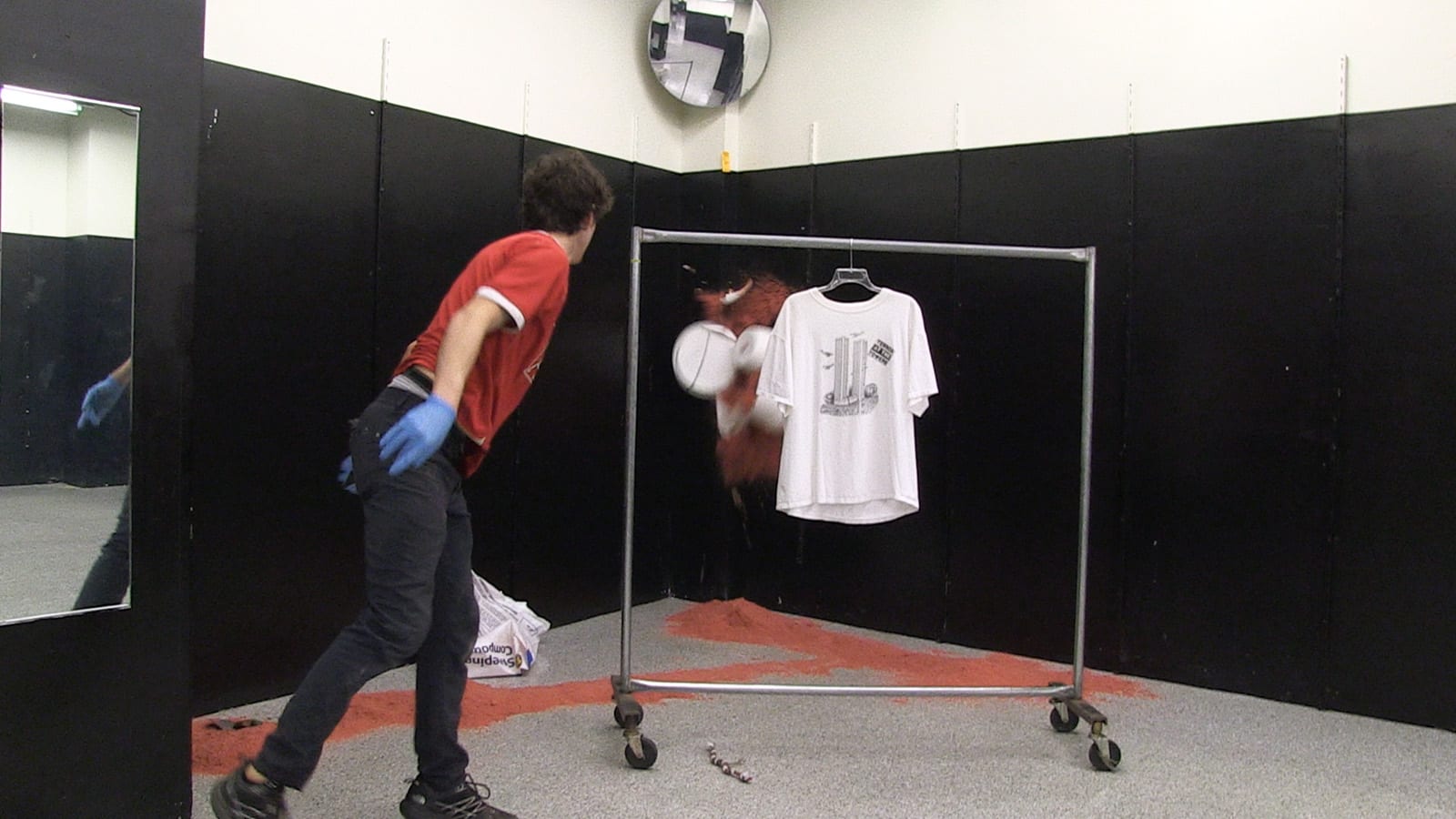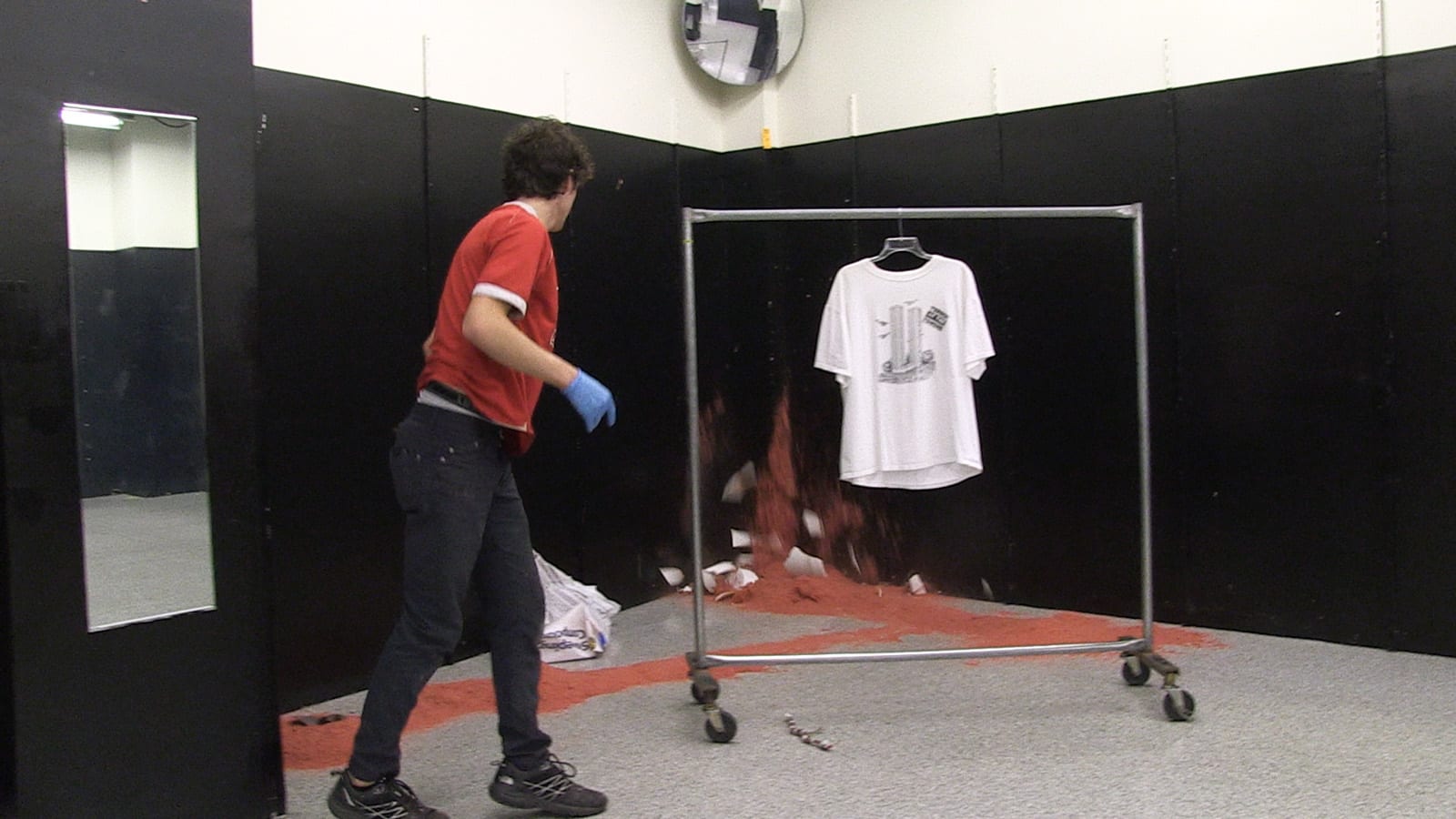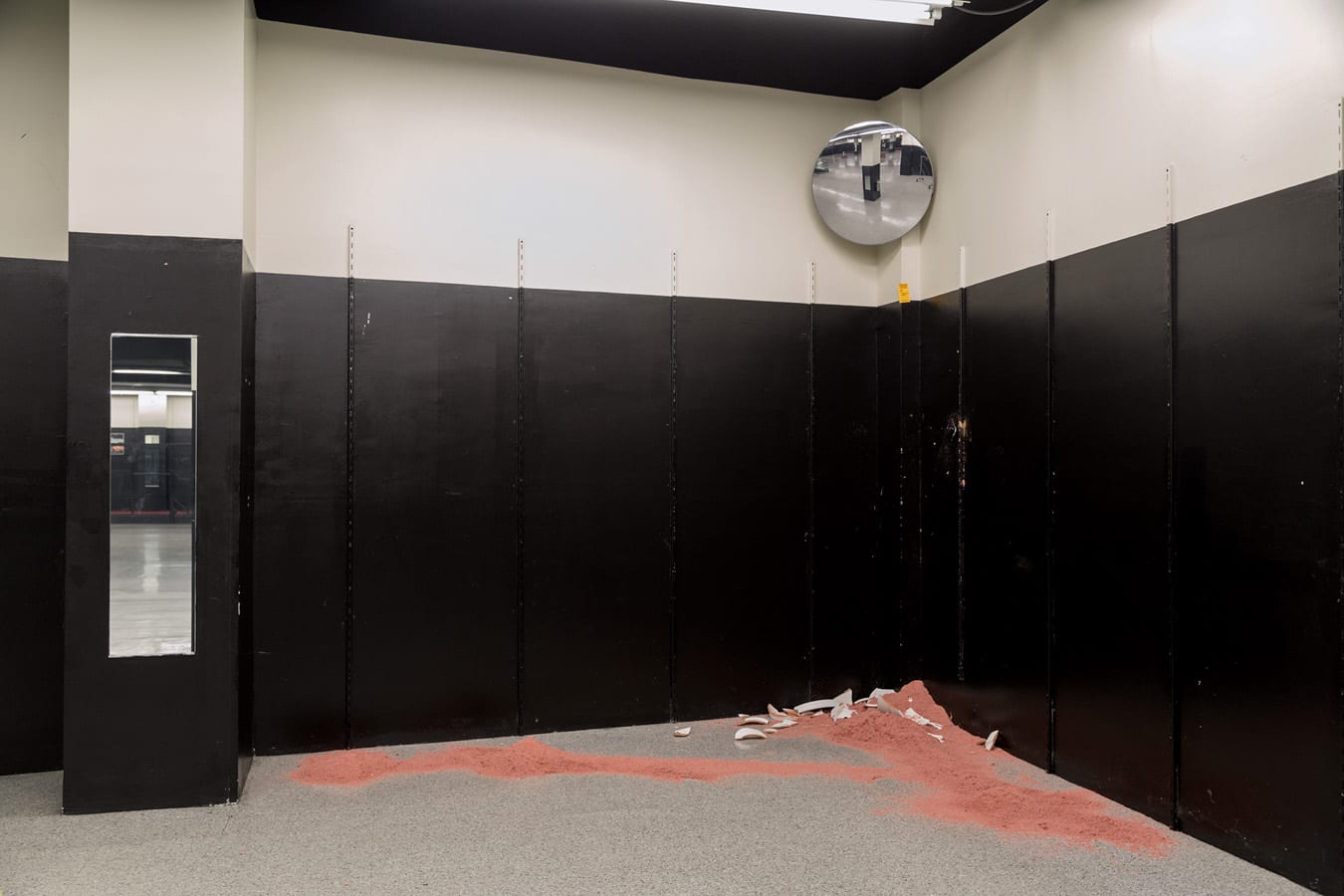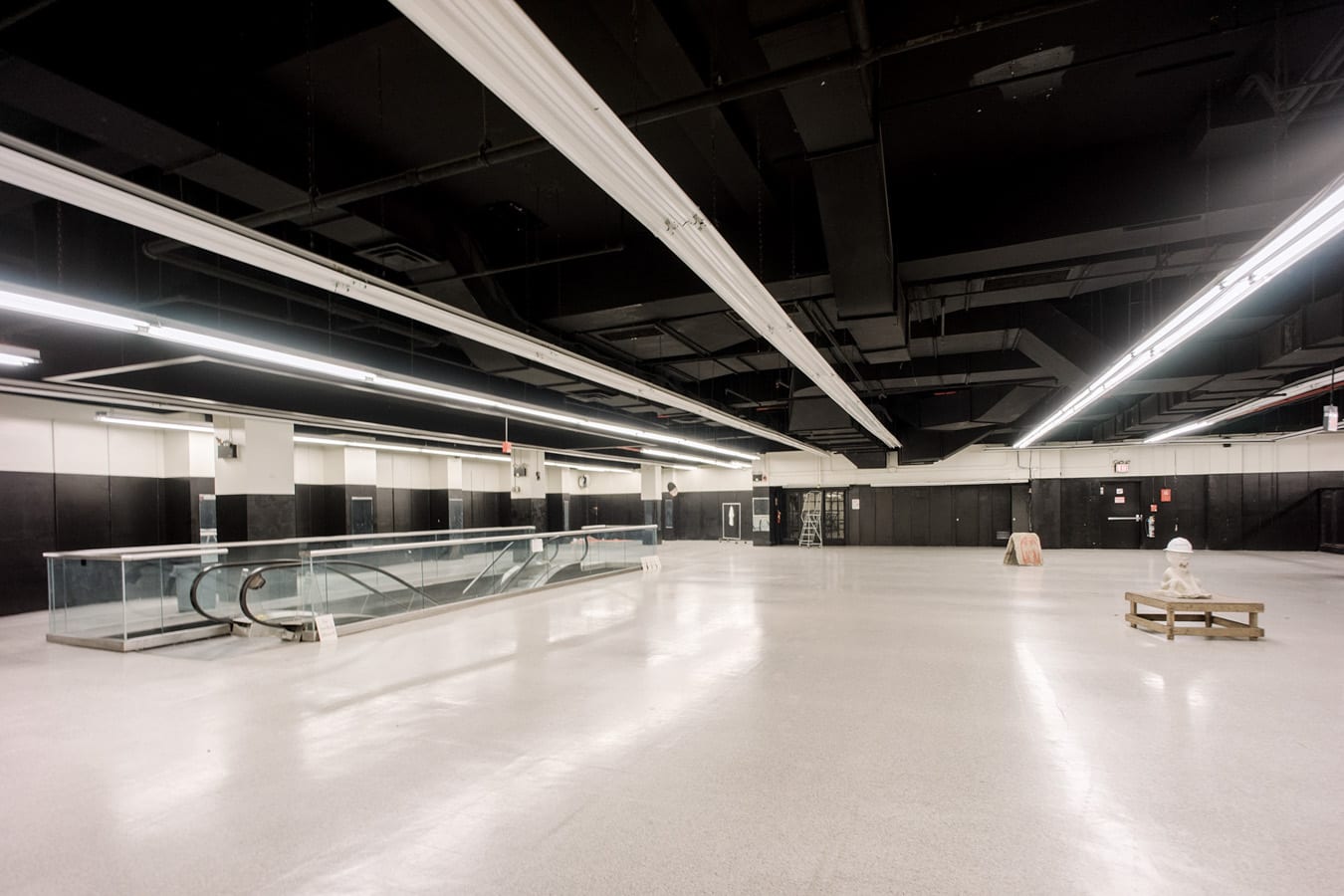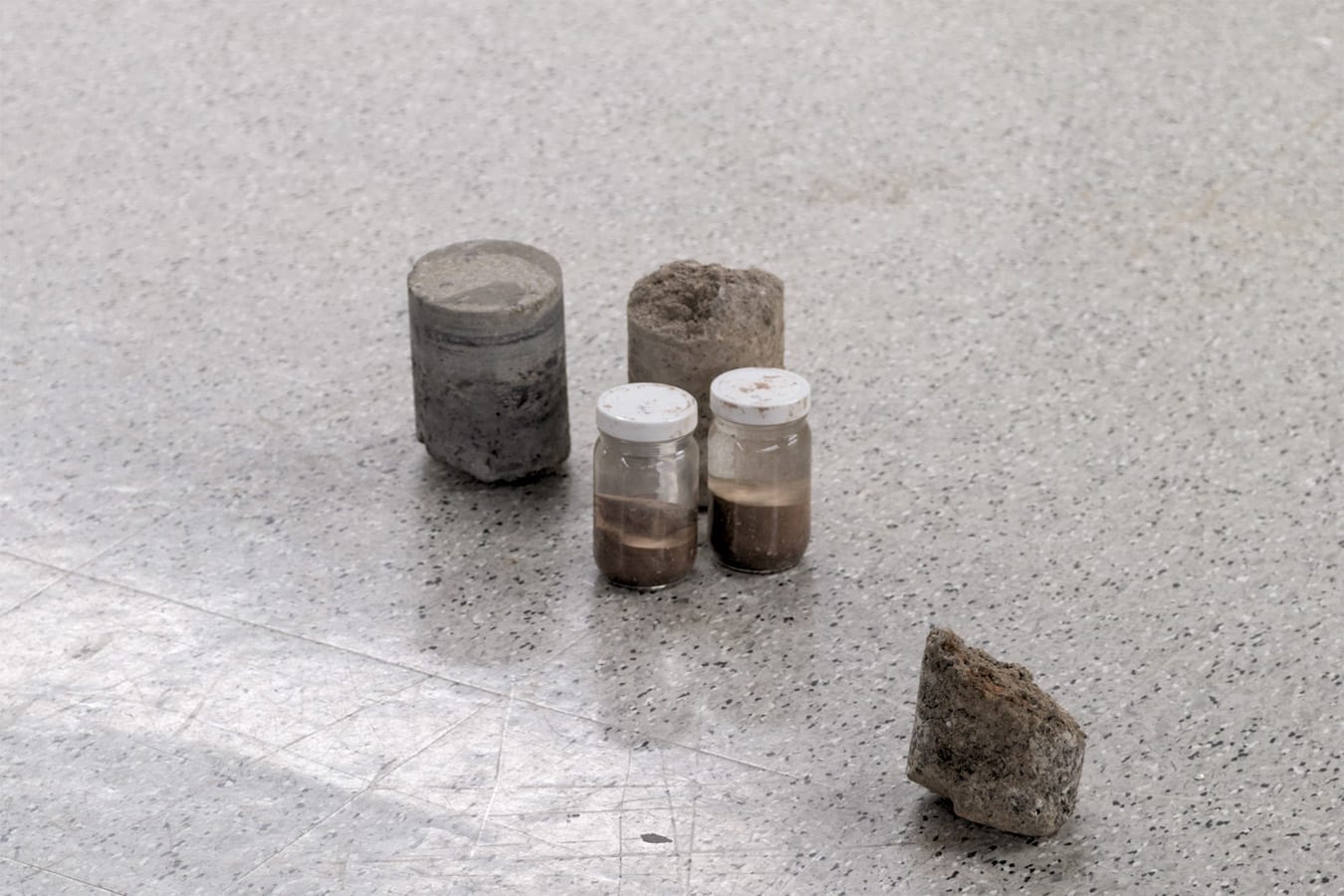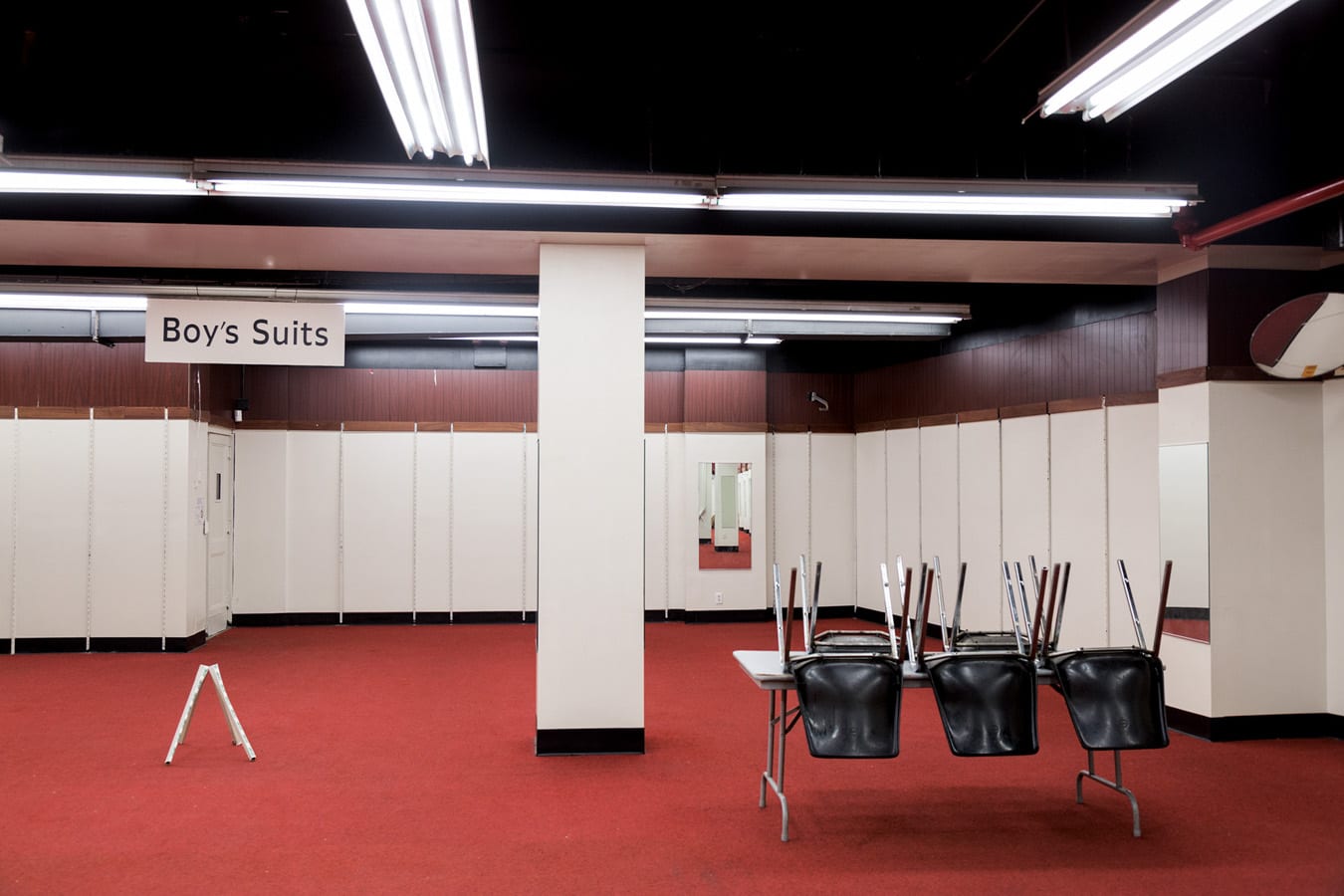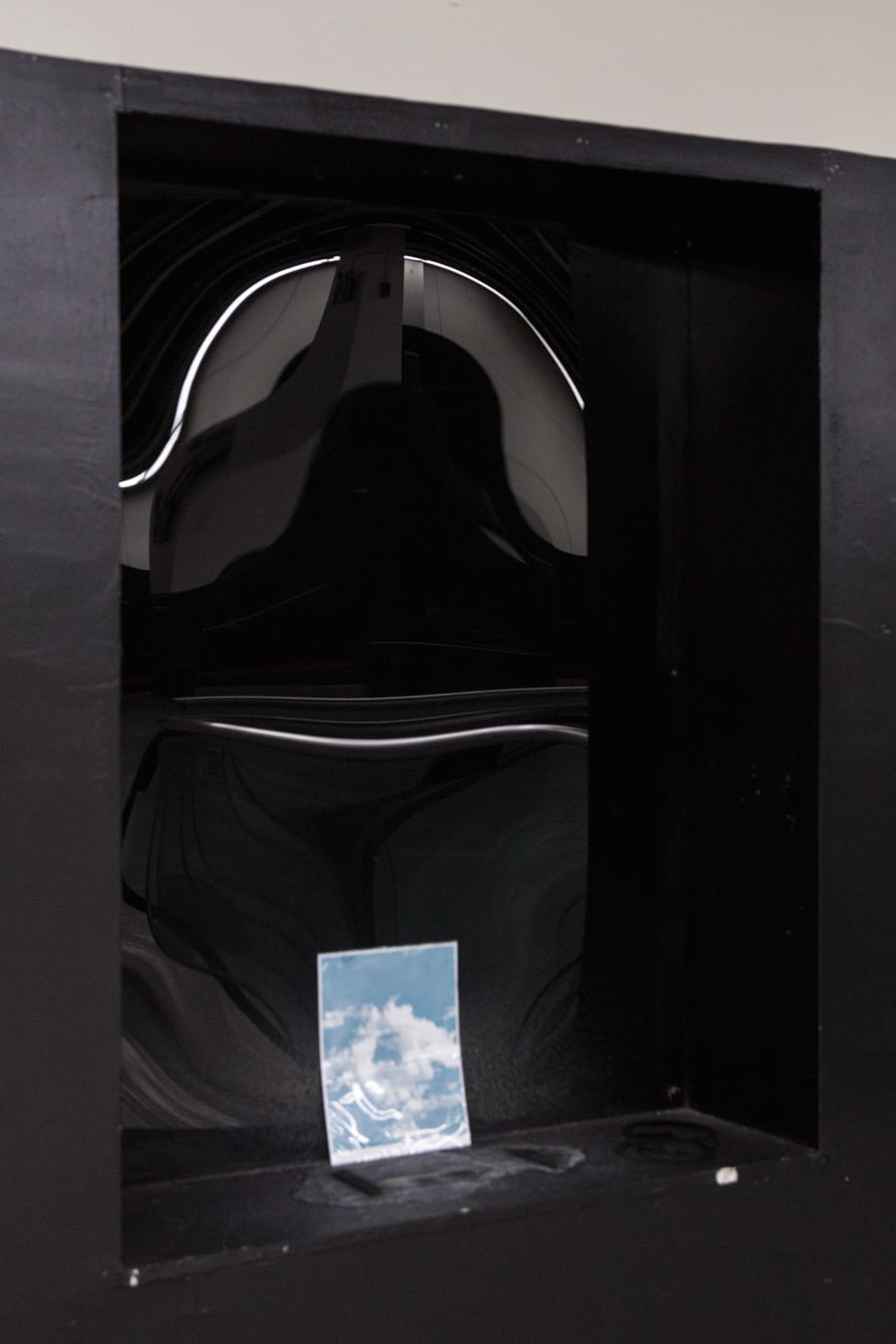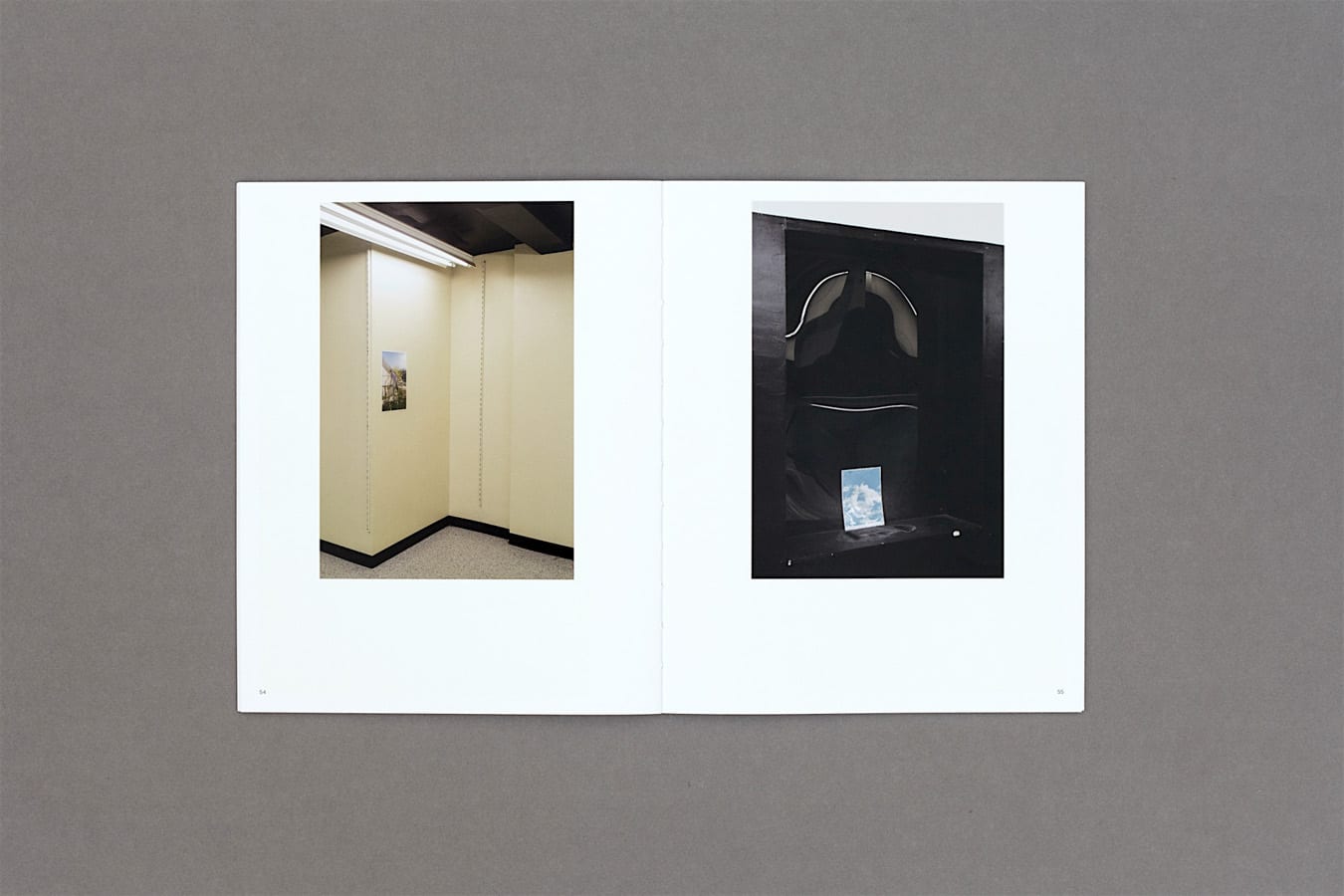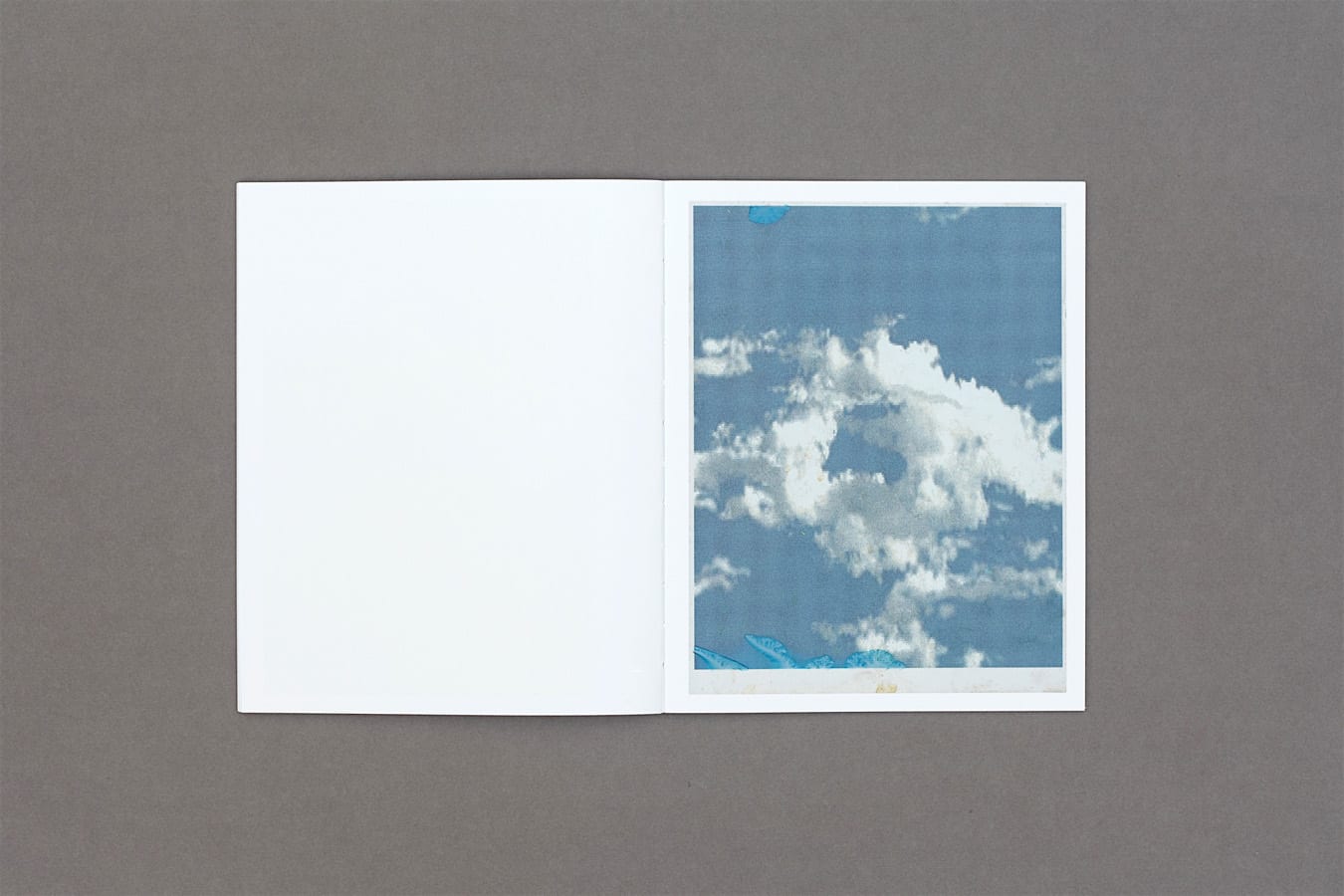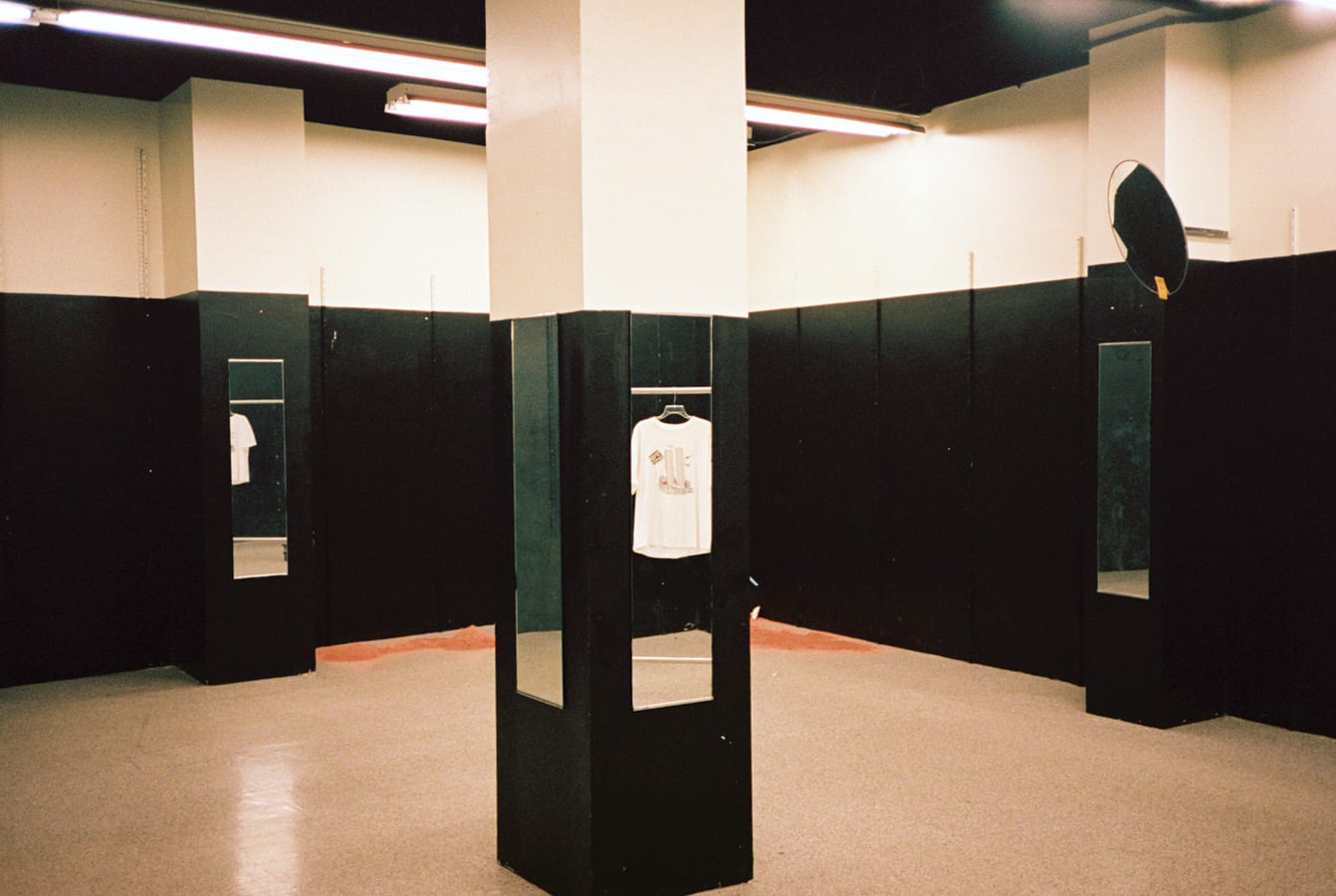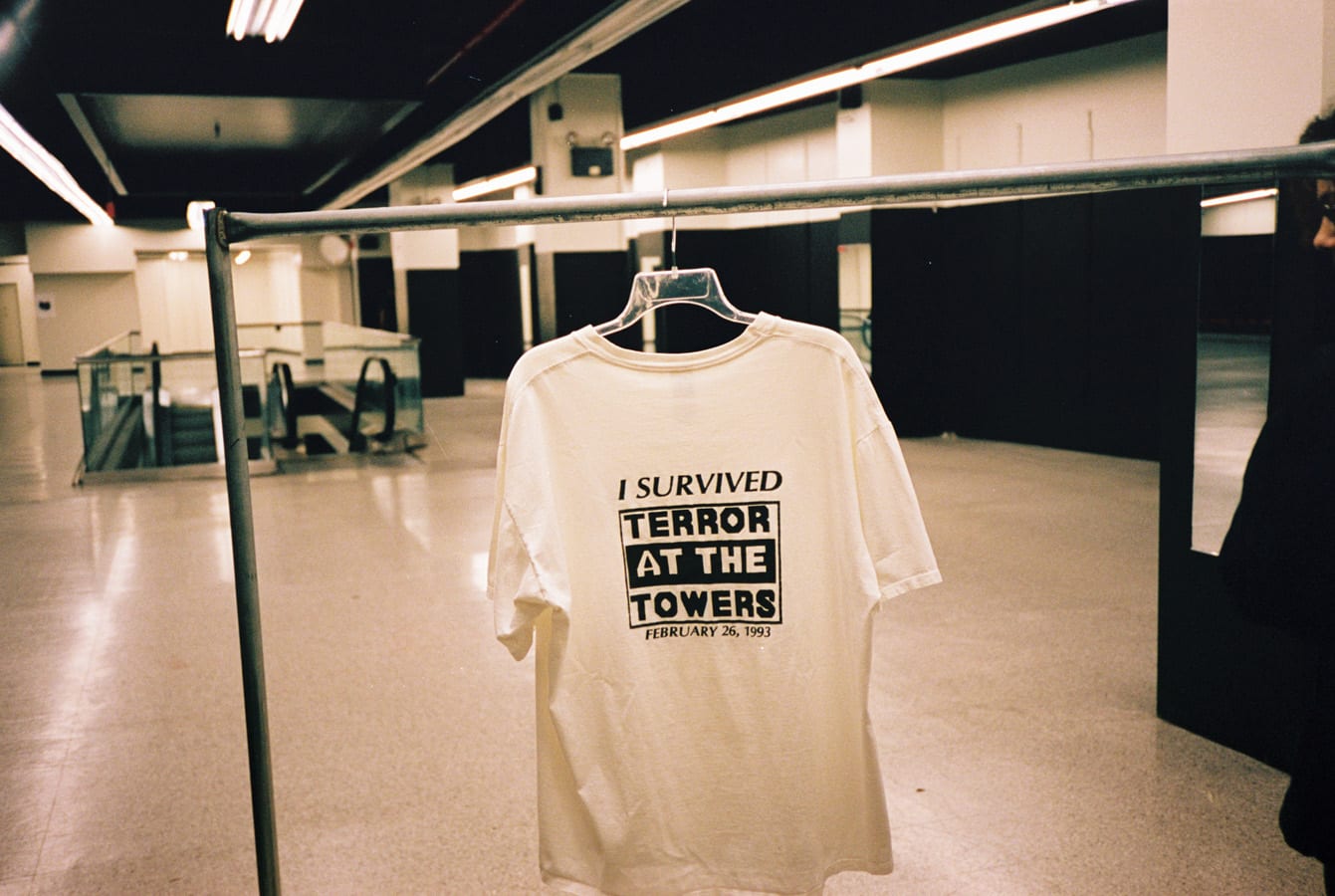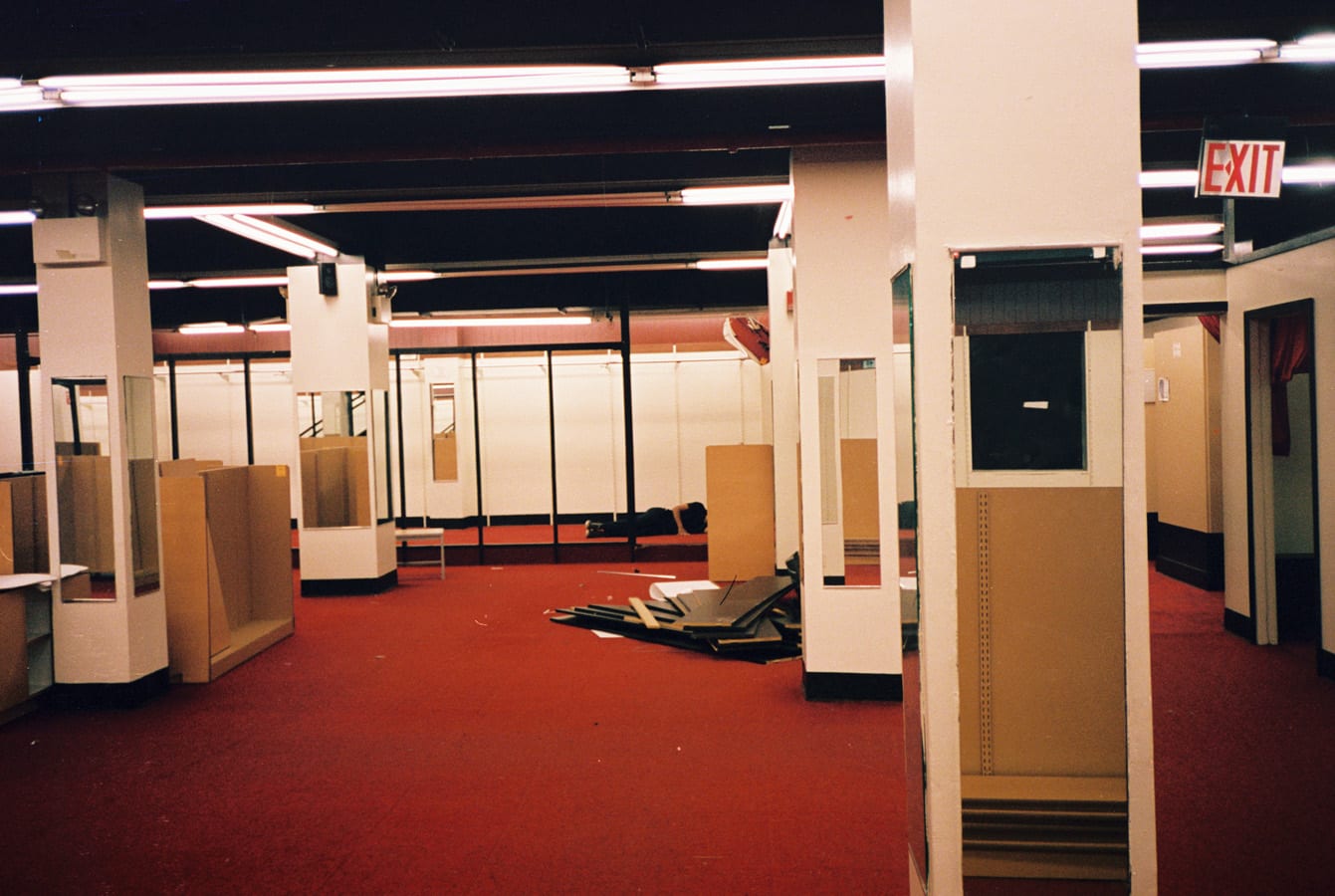“Since I was a child, I’ve had a fantasy of hiding in a retail space just before it closes, and coming out at night to merely walk around, re-arrange some things, and maybe sit or lay on some furniture, nothing harmful whatsoever. Snow Cab felt like a fulfilment of that childhood fantasy, within a 6 floor, or 60,000 square foot retail space.”
In November 2015, in response to the Paris terror attacks, artist Sean Vegezzi set up an installation of works inside a disused retail space in Lower Manhattan, he invited some friends and left the works there. The exhibition was titled ‘Snow Cab’ after his father’s enterprising taxi service during the North American blizzard of 1996. For me it signals an interesting relationship between the agency of artists (and in fact anyone) and events that seemingly belong to the news media. Humans have their own way of responding to things, it seems, and Snow Cab proves how space is re-appropriated for curiosity beyond the headlines. Just over a year down the line, I had this exchange with Vegezzi after seeing Snow Cab, published by Loose Joints.
Sunil Shah: On first encounter, for me, Snow Cab seemed to be about re-purposing controlled spaces and re-claiming that space, even temporarily. This works not only as a rejection of authority but acts as a way of responding to one’s environment how you see fit and re-appropriating that space which is otherwise, an authoritarian realm. Where does the impulse to work in this way come from?
Sean Vegezzi: I understand how some of my works function as some kind of a rejection of authority, and I’m not completely against that. It’s just that a really simple idea is more pervasive in this project than any commentary on authority. Since I was a child, I’ve had a fantasy of hiding in a retail space just before it closes, and coming out at night to merely walk around, re-arrange some things, and maybe sit or lay on some furniture, nothing harmful whatsoever. Snow Cab felt like a fulfilment of that childhood fantasy, within a 6 floor, or 60,000 square foot retail space. In the end, I would say that my current impulse has been to fulfil curiosity, because for me it tends to align highly personal narratives with much larger, or more public concerns.
SS: I know Snow Cab was also a response to the Paris terror attacks just over a year ago and perhaps also reflects the climate of terrorism and global politics we live in. I read somewhere that capitalism and terrorism are related in the way that terrorism is an extreme reaction to the economic inequalities and ideological differences that capitalism creates and perpetuates globally. I can see this connection faintly in the post-consumer landscape on which this work is sited. There is a sense that consumerism is a pacifying component of modern life and that disrupting the space you have chosen, makes a break or ruptures the retail trance that consumers find themselves in. It therefore negates that space and denies the power that seeks to turn us from docile onlookers mesmerised by the trappings of materialism to active agents in protest against the status quo….am I anywhere near your own thinking behind this work?
SV: Snow Cab is definitely a response to those attacks, but the response isn’t extremely direct – there aren’t images of the attacks, the aftermath, there’s no aggregation of statistics. Snow Cab is not a formal journalistic response; it was mainly an attempt to make personal reactions to global events more acceptable. Sometimes it feels as if people that aren’t media professionals are not permitted to interface with global politics, not to mention their own local issues. When I had made Snow Cab, I had just come from sitting at a desk for a year, 7 days a week, producing, shooting, and hosting an unreleased news program for a new television network. I had mentioned curiosity before, and given that I have never studied journalism, politics, and so forth… curiosity is the only connection I’ve ever had to terrorism and global politics – and this is something that created tension for me while working within something like the news. It’s a bit strange how it feels as if we are permitted to look at, let’s say – images of migrants, but the majority of these images are homogenized, and if anyone dare attempt to share their personal take on the migrant crisis, they will most likely experience other people trying to deconstruct and invalidate them and their work. Sadly, I feel as if this mostly comes from the people who view journalistic work, not so much the purveyors of it. The viewers can be just as ready, if not more ready to suppress curiosity in favour of pre-existing, or more formal means of ‘showing’.
Lastly, there’s no proselytizing at work within Snow Cab. To be a bit open here, my way of thinking is not really in line with an anti-consumerism mind-set and it certainly presents no alternative to capitalism whatsoever. The exhibition as a whole functioned as a framework for reinterpreting geopolitical terror narratives that have unfolded since my birth, with the exception of the Paris attacks. I didn’t need to re-interpret the Paris attacks, they had affected me so much because it was the first time I felt as if I was experiencing an event on my own terms, I wasn’t relying on the news, I was reading what civilians were writing on Twitter, and feeling comfortable enough to speak about it with others.
From my birth (right around the beginning of the Gulf War) up until the Paris attacks of 2015, I was having uninformed, one-sided conversations with myself and my peers, and relieving myself of the responsibility to form more educated, thoughtful and sensitive opinions about politics. When I think of the most communicative or overtly political works in Snow Cab, I immediately think of a series of t-shirts I had put on display – they most effectively highlight Western pacification and exceptionalism if you’d like to say that. It’s confusing how some people in the West will be so terrified by a Middle Eastern country’s depiction of an American politician – or the desecration of something like an American flag after the September 11th attacks – when America has been producing extremely graphic and gory products (a urinal cake with Bin Laden’s face comes to mind) to celebrate militaristic feats in the Middle East since the Gulf War… and earning profits from it. Ultimately, Snow Cab just really reflects the American exceptionalism I have seen at work my entire life.
“It’s confusing how some people in the West will be so terrified by a Middle Eastern country’s depiction of an American politician – or the desecration of something like an American flag after the September 11th attacks – when America has been producing extremely graphic and gory products (a urinal cake with Bin Laden’s face comes to mind) to celebrate militaristic feats in the Middle East since the Gulf War… and earning profits from it.”
SS: Despite Snow Cab featuring a photographic record of the exhibition, was your intention to create a situation or happening, in which a displacement between consumer, art-audience, site and gallery takes place? For me this means that you are less interested in photography per se than the situations in which you get to explore your ideas. What is your relationship to photography as a medium?
Sean Vegezzi: The actual process of letting people into Snow Cab was an extremely private thing I did for my closest friends. I was reluctant to share what had felt like an extremely self-referential and therefore self-obsessed project with the public. Photographing what I had done within the space had allowed me to process something that had only existed as a very temporary ‘happening’ if you will, and determine whether or not I wanted to share it. When you have an opening, you obviously relinquish a lot of control over other people’s interpretation of work. Before Snow Cab, I had never considered that I could build out what would technically be called an exhibition, have nobody but my close friends and myself view it, and then determine if it’s to be shared after that.
I meant well with my publishing of the documentation of Snow Cab – I wanted to put something forth that could potentially make people feel less uncomfortable when speaking about issues that are much larger than them. I hoped to validate personal experience and curiosity; it is just as valid as experience that is assigned to you.
I’m very glad that you mentioned photography. Out of the 28 works in Snow Cab, only 7 are photographic prints, one of which was found and reproduced by me. However, the project only has visibility because of photography. Traditional language can really fail me, and photography allows me to say what is very difficult or even futile to try and say with words… and to show moments that truly cannot be recreated. I’m happy to feel as if photography will remain a very fluid practice for me, it may be used to represent works I’ve made in another medium, it could be my main medium. Photography is simply a very, very useful tool, and I’m finally very respectful and appreciative of it.
“At the very moment a police officer in New York fires his weapon at a man wielding a knife in Midtown, that event no longer belongs to the police officer, the man with the knife or the people nearby. Actually, it would make more sense to say that the man who draws the knife is losing ownership of his own narrative at the very moment he takes his knife out and displays it to anybody other than himself.”
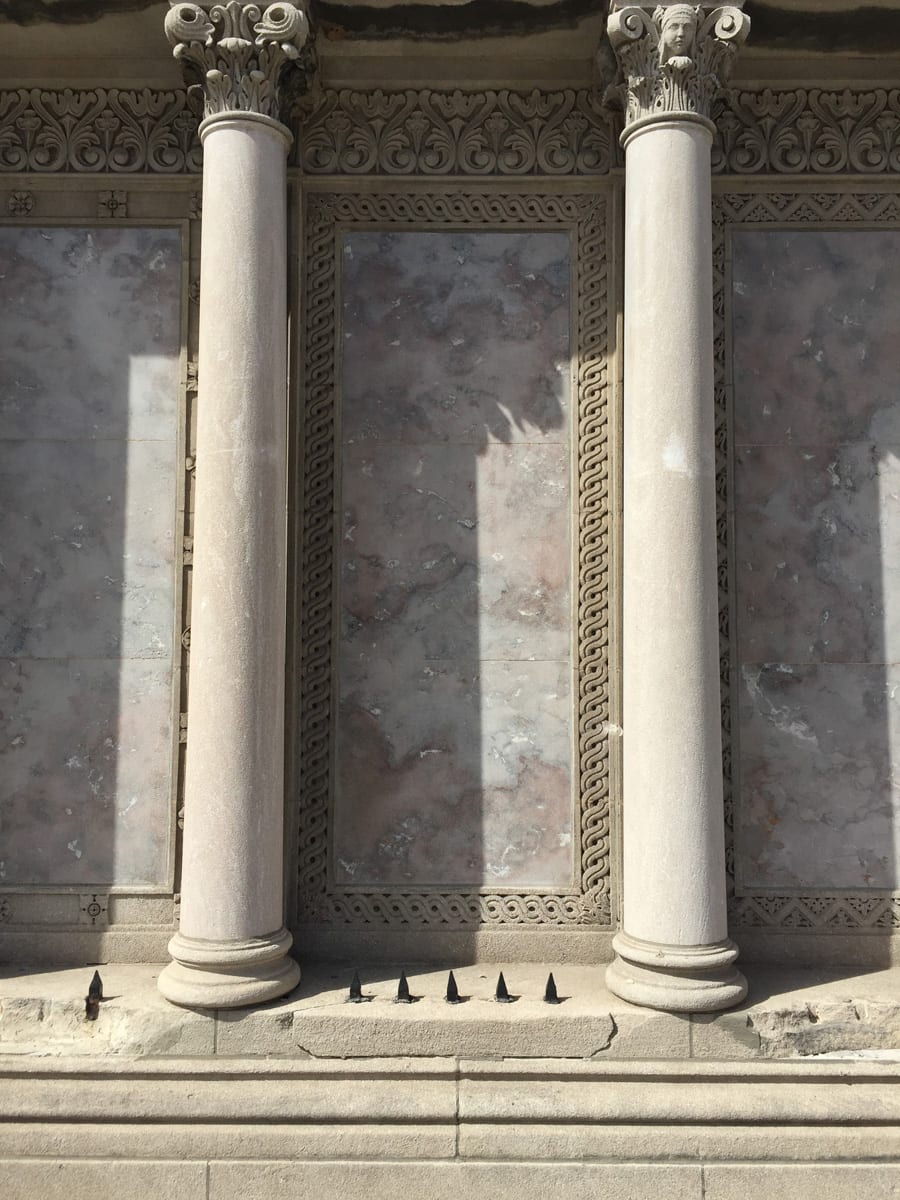
SS: Its very interesting what you say and how you see things, and I realise it’s also very easy to insert and run with one’s own narratives into work that touches some of these topical and political themes. Through what you say, it nevertheless strikes me that our reactions to global terror or other politics are not always simple, predictable responses but are rooted in a set of relations, not only with reactions to media but with each other in our cultural and social contexts. Although Snow Cab was related to the Paris terror attacks, there is also the underlying, dormant trauma and meditation on the 9-11 attacks not to mention the on-going climate of global terror that sits very close by within the Western psyche. As you say, this is something we are not always comfortable with expressing or discussing, yet this is something that we should find ways of articulating beyond reactionary hysteria or positioning ourselves as victims of Western political foreign policy or religious extremism. So I can see how your work doesn’t offer a representational mode but more of a relational mode. it takes on what we might consider a post-medium sense, and I mean that there are a set of relational dynamics outside of strictly any one form or media involved in your work – happening, chance, performance, installation, photography, video – and the intersection of these elements with the people involved and the people that engage with your work. What are you working on now and where are things headed?
SV: The insertion of your own narratives and those of any other viewer, into any work is fair. Louise Lawler’s words always come to mind whenever I may have an issue with how a work can be perceived – “The works work in the process of its reception”. One of the first works that a viewer (in this case, my close friends) could see was a huge conference table I had thrown hand-made booklets across – containing a very rough version of the essay that appears in the actual Snow Cab publication. The following excerpt was removed from the final essay in the book, but I feel as if it’s very relevant here – it’s in reference to a shooting that took place in New York on August 12, 2012:
“At the very moment a police officer in New York fires his weapon at a man wielding a knife in Midtown, that event no longer belongs to the police officer, the man with the knife or the people nearby. Actually, it would make more sense to say that the man who draws the knife is losing ownership of his own narrative at the very moment he takes his knife out and displays it to anybody other than himself.”
I am working on finishing a book for another project that has the same pipeline as Snow Cab so to speak, that is: private display – book – and lastly, a public event. The book project details a 10 year relationship I’ve maintained with a space in Lower Manhattan, New York. The relationship the book detail isn’t one that is dealt with in photographs, I wasn’t really photographing the same space for 10 years, I was doing other things in it. I was taking all of my concerns and criticisms of private space, public space, privately owned public space, and undefined space… and dealing with them within this one space, trying to create a space, or a set of experiences that would satisfy me in ways that those other spaces couldn’t. Space was the medium for sure.
(All Rights Reserved. Text @ Sunil Shah. Images @ Sean Vegezzi/Alec Martin.)
